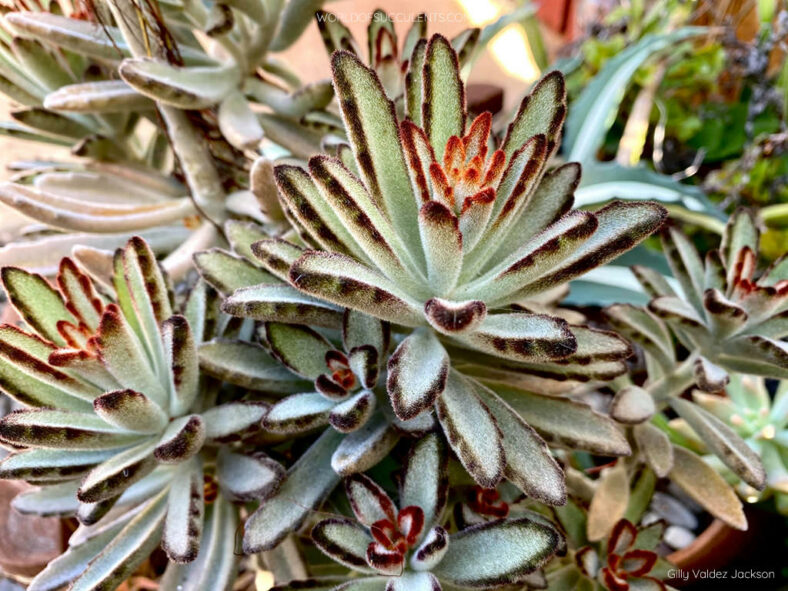Kalanchoes are succulent plants valued for their vivid, bright colors and tightly clustered bouquets of little flowers. They are hardy in USDA Plant Hardiness Zones 10 through 12 but make an excellent indoor plant. These plants can start losing their vibrancy in the second and third years of growth, but propagation methods are easy and can produce young, healthy plants. The seeds from cross-pollination can create some interesting hybrids, but there is no guarantee that there will be a particular resemblance to the parent plants. If you want to try and see what you get, seed propagation is right for you. If you would rather have more of the same plant, you can propagate Kalanchoes using cuttings.
1. Seeds
Kalanchoe seeds are tiny, around 2.5 million per ounce. When you propagate Kalanchoe with seeds, you have two options. The first is to purchase seeds from your local garden center or nursery. The second is to cross-pollinate two Kalanchoes or more if you have them. You can crossbreed the two varieties and develop a hybrid that can have traits of the parent plants, traits of its own, or both. It is always exciting to see what crossbreeding two Kalanchoes will bring you and what colors you will see in your shrub.

To crossbreed, wait until two or more plants are in full bloom. Then, use a small paintbrush or Q-tip to brush pollen from the stamen of one flower to the stigma of another, transferring from plant to plant. Since the flowers come in crowded bundles, it may be easiest to cut off a clump of them and pull them apart to get to the pollen.
The seeds can be directly sown in warm, slightly moist soil made of half succulent mix and half fine potting soil. The warmth and humidity of the dirt will activate the seed's growth hormones and guide the sprout toward nutrients, giving you a baby Kalanchoe sprout.
Seeds should be placed in indirect light at temperatures between 70 and 75 °F (21 and 24 °C). Fill a clean spray bottle with filtered or rainwater and mist the seeds only when the soil appears dry. Do not overwater! Germination should take around ten days. Pinch the seedling back lightly at 6 to 8 weeks. When they are 6 inches (15 cm) high, transplant the seedlings to their own pots and follow the care instructions below.
2. Cuttings
If you want to have the exact same plant, you can propagate Kalanchoes with cuttings. First, take your cuttings in early spring, using a pair of sharp garden shears to cut a few strong green shoots off, 6 to 9 inches (15 to 22.5 cm) long. Next, strip the leaves off the bottom 3 inches (7.5 cm) of the cutting. Allow the cuttings to dry on the counter for around three days to let the cut side heal. If you plant the cutting immediately, it will be susceptible to rot.
The soil requirement for cutting propagation is a succulent mix blended with some humus and topsoil. Dig a small hole and stand the cutting upright, filling the hole in and pressing firmly so that it stands up on its own. Avoid watering the cutting for at least one week.
Seedling Care
To thrive, these succulents need temperatures between 60°F and 85°F (15°C and 30°C). Repeated exposure to colder temperatures will kill them. Therefore, keep your indoor plants away from doors or drafts during the winter, and consider using a radiator or small heating pad set on low to maintain these temperatures.
Kalanchoes love the sun but avoid direct sunlight in the summer, which can scald them. These environmental parameters should be used until transplantation. Your plants generally will not be ready for a permanent home in your garden until they are about 2 or 3 years old. They must be between the adolescent and mature stage, so transplanting does not kill the plant. Allow the soil to dry out between waterings to avoid root rot.
Source: doityourself.com
Links
- Back to genus Kalanchoe
- Succupedia: Browse succulents by Scientific Name, Common Name, Genus, Family, USDA Hardiness Zone, Origin, or cacti by Genus